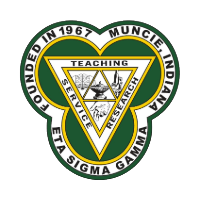ESG Poster Presentation
Program Planning and Evaluation
Wednesday Evening Poster Reception
WED-061 - Coloring Outside the Lines: Addressing Stress Relief Through Art Therapy
Wednesday, April 16, 2025
6:00 PM - 7:00 PM PST
Location: Pacific I/II, 2nd Floor
Area of Responsibility: Area II: Planning
Subcompetencies: 2.3 Determine health education and promotion interventions., 2.4 Develop plans and materials for implementation and evaluations.
Research or Practice: Practice
Subcompetencies: 2.3 Determine health education and promotion interventions., 2.4 Develop plans and materials for implementation and evaluations.
Research or Practice: Practice

Lindsay Reichley
Student
University of North Carolina Wilmington
Wilmington, North Carolina, United States
Poster Presenter(s)
Learning Objectives:
At the end of this session, participants will be able to:
- By the end of the presentation, attendees will understand how interactive learning activities foster a deeper connection and greater engagement among unsheltered adults, facilitating trust and participation.
- By the end of the presentation, attendees will be able to articulate the principles of art therapy and its therapeutic value in facilitating emotional expression and promoting healing.
- By the end of the presentation, attendees will be able to identify the key challenges and barriers faced in implementing art therapy programs for unsheltered adults and discuss strategies for overcoming these obstacles.
This presentation will focus on a previous class program, Brushes of Wellness: Harnessing Creativity for Stress Reduction. This program was planned, implemented, and evaluated for a class at the University of North Carolina Wilmington, created based on needs assessments results, focusing on mental health for unsheltered adults at Living Hope Street Ministries.
Detailed abstract description: This presentation will describe the Brushes of Wellness: Harnessing Creativity for Stress Reduction program and the evaluation findings. Brushes of Wellness is a health promotion program for unsheltered adults in Wilmington, North Carolina, attending Living Hope Street Ministries, a day center. The program was planned, implemented and evaluated as a class assignment. It was developed based on the results of the needs assessment conducted by the planning team. Results showed that 56 percent of those surveyed were most concerned about mental health. Of these, 50% were aware of the available services; however, they were not interested in using them. We aimed to support the population in addressing their interests, so the program focuses on art therapy as a coping strategy.
The program has two lessons, Mindful Motions and Canvas Expressions. To foster engagement and control, both lessons emphasize art therapy activities: watercolor painting and personalizing tote bags. The objectives of the program aim to have 55% of participants be able to list two benefits of recreational art therapy for mental health, 5 pieces of artwork made visible throughout Living Hope Street Ministries, 25% of participants be able to identify at least two areas of mental health that art therapy can address, and 30% of participants be able to understand what it means to be emotionally aware, all by the end of the program.
Mindful Motions introduced recreational art therapy and the benefits it can have on mental health. We discussed ways to incorporate art therapy into life. Then participants painted and were encouraged to let their creativity and emotions guide them. Canvas Expressions focused on the challenges of recognizing and expressing emotions, including what emotional awareness is, and the specific areas of mental health art therapy may address. The activity for this lesson was to decorate a tote bag. The goal was for participants to reflect on their emotions, as a way to validate and empower them because they are in control.
To determine program effectiveness, a non-experimental, pretest and posttest evaluation design was used. Test scores were used to assess knowledge change. Participants were asked questions that align with the learning objectives. The questions examine the benefits of recreational art therapy, the meaning of emotional awareness, and the areas of mental health recreational art therapy can address.
Data will be analyzed through a paired samples t-test to compare the means of test scores of participants before and after the program. Results will be presented for key variables and reported in a table, identifying the difference of scores.
Take aways from the presentation include learning how choosing interactive program activities can make complex concepts more relatable and understandable for an unsheltered population. Participants will also hear how encouraging participant engagement as contributors-built trust by valuing their experience through art.

